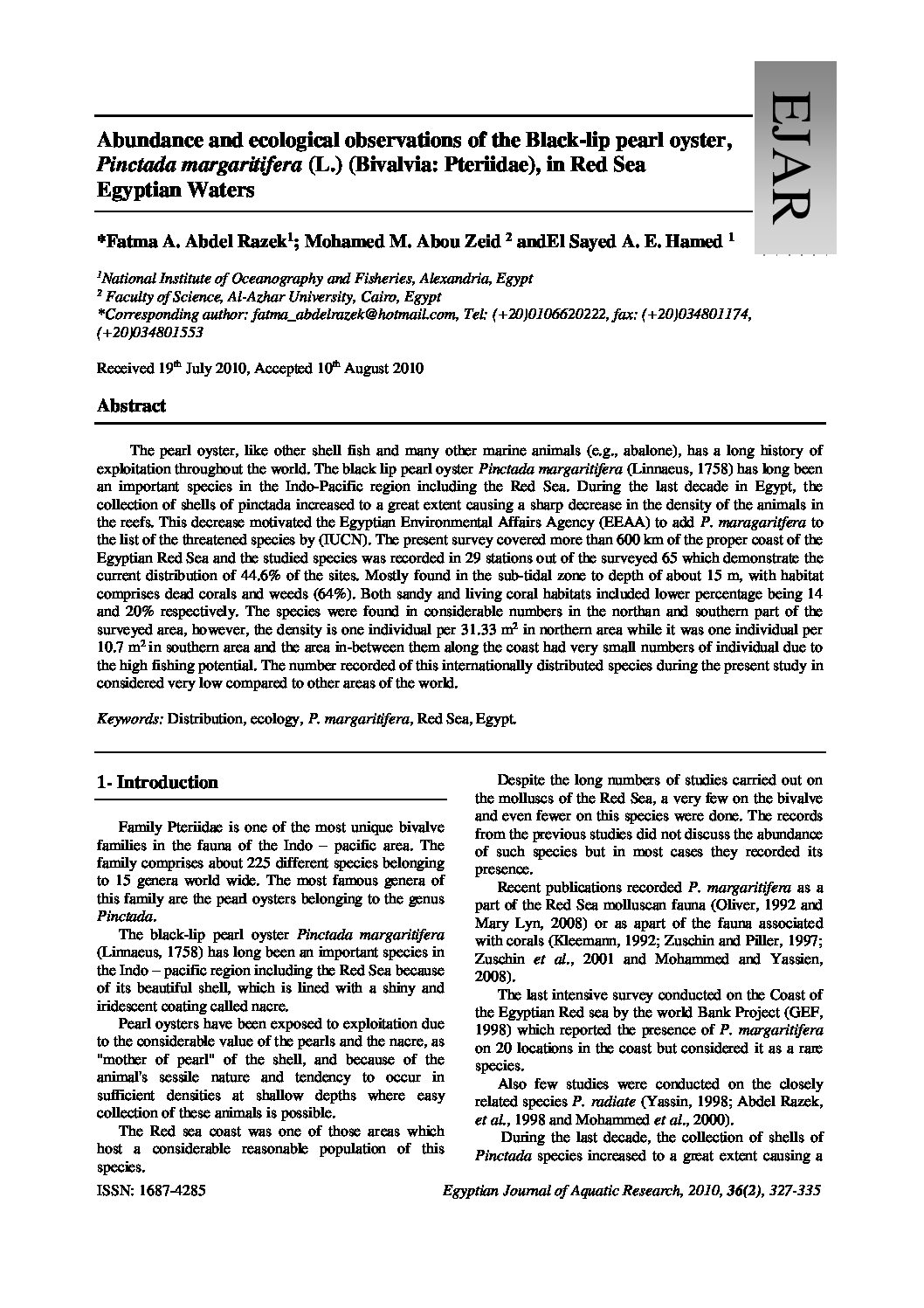Categories
vol-36Distribution of copper and zinc in Aswan dam reservoir and River
Nile water at Aswan, Egypt
Mohamed, E.F. Toufeek
Chemistry department, National Institute of Oceanography and fisheries, Egypt
[email protected]
Received 7th October 2010, Accepted 1st December 2010
Abstract
The present study deals with the factors affecting the distribution of copper and zinc in Aswan Reservoir (R),
and River Nile (N) waters during 2008. The available data show that the concentrations of Zn were higher in eastern
side than those in the western one in the different seasons, due to the different type of wastewater contamination
effluent on the east side of Nile at Aswan City. Aswan Reservoir shows that copper is positively correlated with Ca
(r=0.90), pH (r=0.85), DO (r=0.73) and it is negatively related to temperature (r=-0.69), EC(r=-0.75), NH3(r=-0.57),
PO4 (-0.70). While in the River Nile water it is a negatively significant with temperature (r=-0.60), EC(r=-0.74),
SiO3
2-(r=-0.55) and it has a strong positively correlation with NO2 (r=0.93), Ca (r=0.72) during the period of study.
It appeared from the data given that copper values in Nile water have the same trend of zinc. The high Cu and Zn
levels recorded during oxygenated seasons (winter and spring) in Aswan Reservoir and River Nile areas probably
due to oxidation of metal sulfide and organic compounds to produce (CuSO4.5H2O, Cu (NH3)4SO4 and Zn(NH3)4
SO4 ), thus liberates significant amount of these metals from sediment and suspended particles to the surrounding
water. It appears from the data given that the levels of different physicochemical parameters in Aswan Reservoir are
still bellow the permissible limits. While the water of River Nile at Aswan has a low quality as compared with
reservoir water, where many items were exceeded the permissible limits as dissolved oxygen during summer, nitrate
in autumn and nitrite in spring.
Keywords: River Nile, Old Aswan Reservoir water, copper and zinc, contamination







